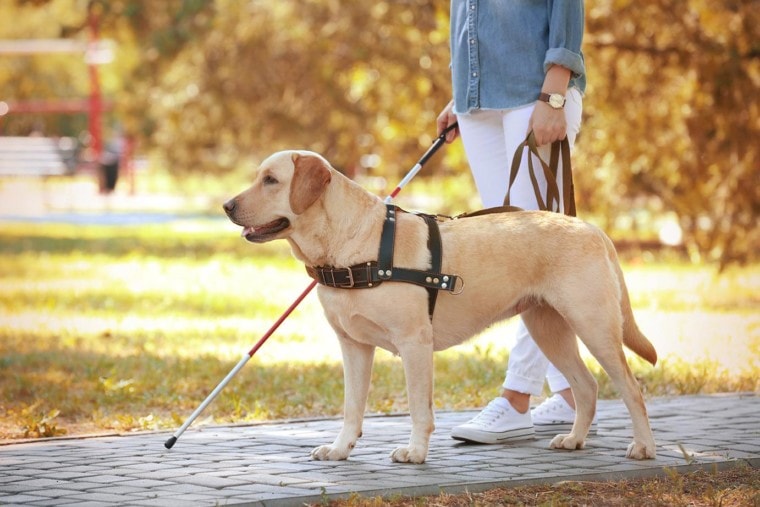
Service dogs are an essential part of many people’s lives. They allow freedom and independence to people with physical and psychological disorders that may limit their ability to perform all necessary aspects of their life independently. As people are becoming more aware of the necessity of service dogs and the jobs they perform for their handlers, it has led to many people wondering what types of tasks service dogs can be trained to do. Here are multiple types of service dogs and explanations of how they serve their handlers.
The 10 Types of Service Dogs & What They Do
1. Guide Dogs
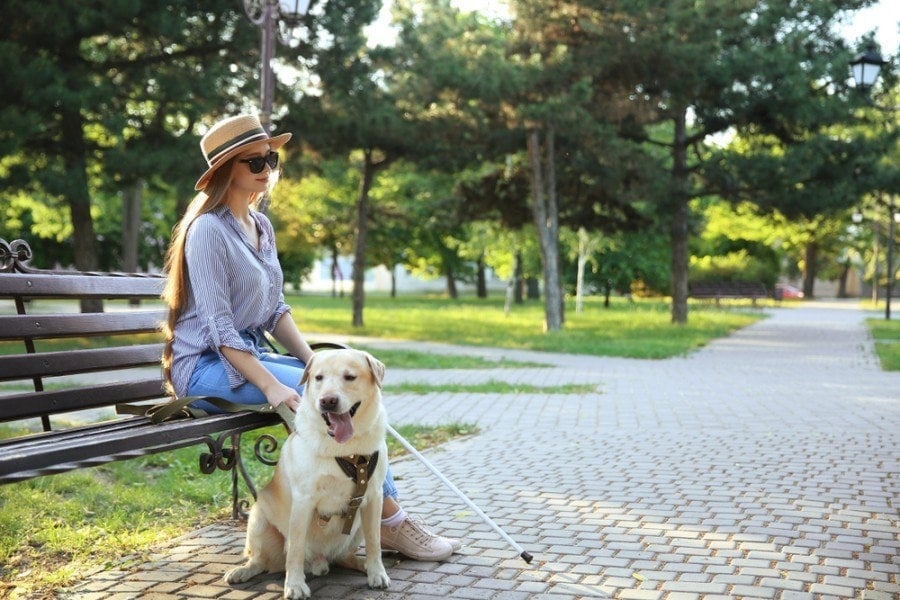
Guide dogs are the quintessential service dog, helping to guide people with visual impairments. They can be trained to navigate everything from curbs to traffic and allow a great deal of freedom to those with visual impairments. Guide dogs provide the ability to get to and from jobs, events, and errands, as well as safely navigate through a home without the assistance of other people. Guide dogs are so effective that they have been actively participating in the lives of people with visual impairments since World War 1. Some stories even report an ancient form of guide dog assistance as early as Roman times.
2. Hearing Assistance Dogs
Hearing assistance dogs are specially trained to support people with aural impairments. These dogs can be trained to alert to a wide variety of sounds, including phones, doorbells, alarms, and even crying babies. Tasks like alerting to phone notifications or doorbells are beneficial, but some sounds that these dogs alert to can be lifesaving. For people with hearing impairments, not being able to hear sounds like smoke or carbon monoxide detectors alarming can be deadly. For people with young children, hearing assistance dogs provide a valuable service by allowing them to go about their normal day while their children nap or play with the knowledge that the dog will alert them to changes.
3. Seizure Response Dogs
For people with severe seizures, seizure response dogs can keep them safe in multiple ways. There are two extremely important tasks these dogs can be responsible for if their handler has a seizure. The first is protecting them during and after the seizure. They can help guide someone to the ground, protect their head, and protect them from external factors throughout the seizure, sometimes even dragging them out of harm’s way if a seizure occurs near a roadway or other dangerous area. The second major tasks they can be trained to perform is to seek help when a seizure occurs. They can be taught to seek help from other people, dial a phone for emergency assistance, or press assistance buttons.
4. Seizure Alert Dogs
Seizure alert dogs are specially trained to detect changes that occur in the period before a seizure occurs, allowing them to alert their handler to the impending seizure. The idea is that it allows the handler to get into a safe location or position before the seizure begins. Unfortunately, many people don’t feel like seizure-alert dogs are particularly beneficial due to the many factors at play when it comes to seizures. They may not accurately detect seizures before they occur, which can lead to people ending up in a dangerous situation. Ideally, if someone has a dog that they consider to be a seizure-alert dog, they should also be trained as a seizure-response dog. There are thousands of micro behaviors that can occur in the pre-ictal phase, which can make training a seizure-alert dog nearly impossible in some situations.
5. Diabetic Alert Dogs
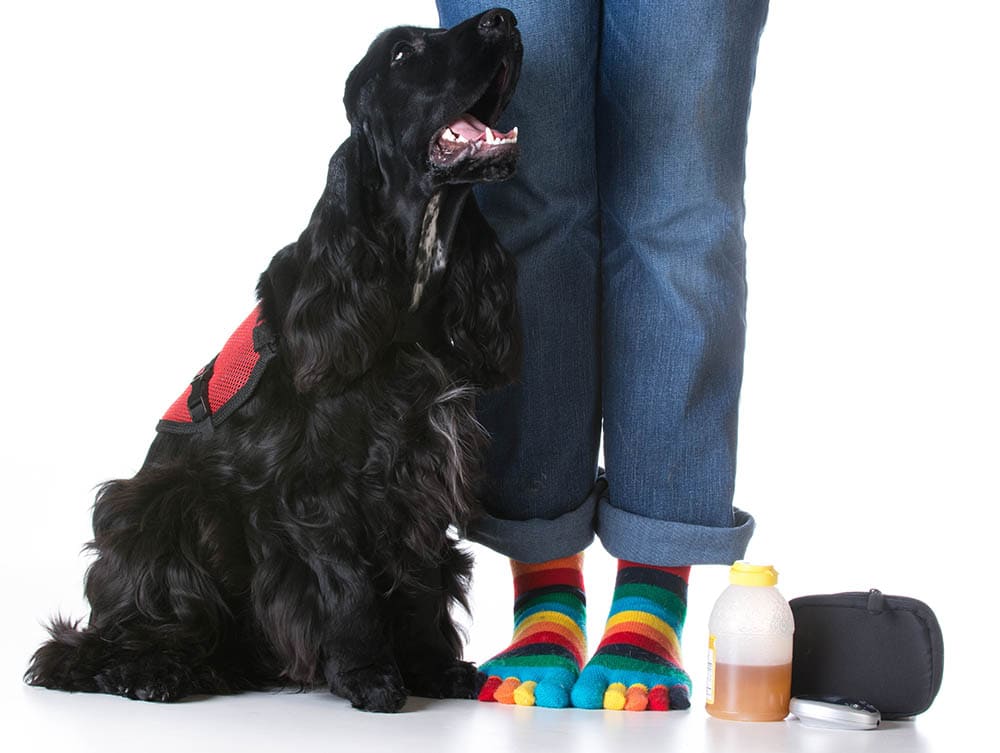
These service dogs can be trained to detect both high and low blood sugars. They are usually trained to detect low blood sugars, though. For many people, managing diabetes can be complicated. This is especially true of children and people who lack a thorough understanding of the disease, although any diabetic is at risk of a bottomed-out blood sugar from factors relating to meals, medications, and general health.
Diabetic alert dogs can not only notify someone that their blood sugar is dropping or has dropped, but they can detect this even if the person is asleep or unconscious. Oftentimes, they are trained to retrieve medications or snacks to help get blood sugar levels under control. Sometimes, they are also trained like seizure response dogs and can seek help if the handler is not conscious or is unable to help themselves.
6. Psychiatric Service Dogs
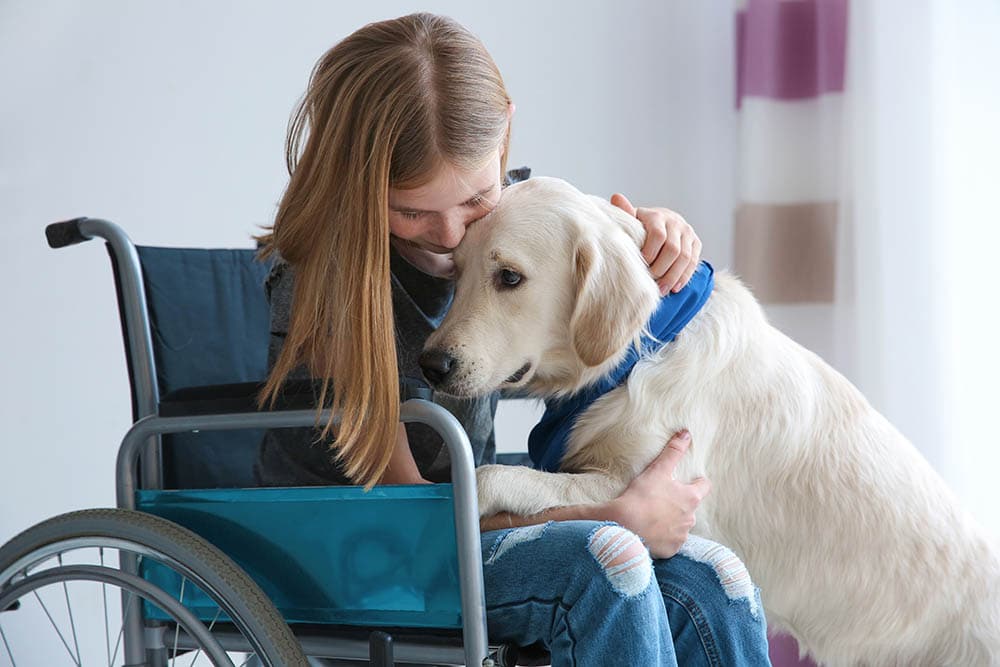
Psychiatric disorders, like PTSD, schizophrenia, and anxiety, can be crippling to the people who suffer from them. These service dogs can be trained to perform dozens of tasks, including retrieving medication, seeking help, and grounding their handler. Grounding can be particularly useful for people who are suffering from a flashback, hallucinations, or other temporary breaks from reality. There are multiple ways they can help bring their handler back to reality or relieve stress and anxiety, such as pressure, similar to what you might experience from a weighted blanket.
7. Brace/Mobility Support Dogs
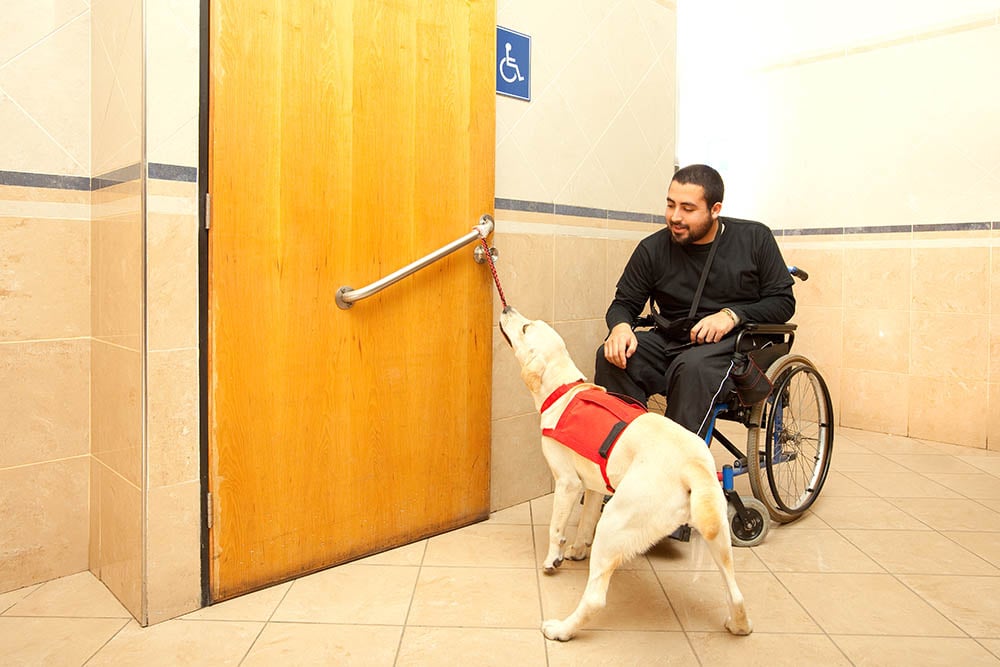
Providing bracing and mobility support may be the most varied type of work that a service dog can do depending on the needs of the handler. These dogs can help with household tasks by carrying groceries, opening doors and cabinets, and retrieving medications and other necessities. They can also provide these types of assistance tasks in public places as well.
Bracing involves providing a physical support to the handler by using the dog’s weight or size against the handler. This can help people with mobility and balance problems stay safe and independent. Brace/mobility support dogs can assist a handler that has fallen get back up, prevent slips, trips, and falls, get into or out of a bed or chair, and balance in lieu of other assistive devices like a cane or walker. They can even be trained to pull a wheelchair or drag their handler to a surface where they can pull themselves up after a fall.
8. Autism Support Dogs
For many people with autism, the world can be an overwhelming place. Autism support dogs can provide a sense of normalcy and routine, as well as providing the extra boost that some people need to navigate social settings. To an extent, autism support dogs function in a similar manner to psychiatric service dogs by providing emotional and physical support during times of stress. As a bonus, this type of service dog can make it easier for children with autism to make friends and connections in situations where other children may not understand their behavior or may think that they are “odd”.
9. Fetal Alcohol Spectrum Disorder Support Dogs
FASD support dogs are very similar to autism support dogs. They provide emotional and physical support to children and adults with fetal alcohol spectrum disorder. This type of service dog is relatively new, so they are not a common sight. However, they are showing great promise in making a difference in the lives of people with this disorder.
10. Allergy Alert Dogs
For people with severe food allergies, allergens can be deadly but difficult to avoid. Allergy alert dogs can be trained to detect specific allergen compounds in food and alert their handler to the presence of the allergen. They can even detect allergens that may cause reactions through smell, like peanut butter. These service dogs can be extremely beneficial to children who may not remember to ask about potential allergens in food.
Frequently Asked Questions:
How is a “Service Dog” Defined?
A service dog is a dog that has been specially trained to perform specific tasks to assist people with some form of disability or disease that interferes with their ability to perform certain tasks without assistance. They are considered to be essential medical equipment, much like a walker, cane, or portable oxygen canister would be. For this reason, service dogs are protected under the Americans with Disabilities Act and are allowed in just about every place a person can go where they would need assistance, including hospitals, restaurants, and grocery stores. Since they are considered to be medical equipment, the ADA also ensures that service dogs can be housed with their handlers at no additional charge.
Why Aren’t Emotional Support Animals on This List?
There is a distinction between the functions of a service dog and an emotional support animal. The first distinction is that a service animal must be a dog or a miniature horse. There are no service animals that are recognized by the ADA other than dogs and miniature horses. Emotional support animals, on the other hand, can be just about anything.
The biggest distinction between service animals and emotional support animals is that ESA are not trained to perform tasks. Their presence is the emotional support they provide. While they are extremely beneficial to people who may need this type of support, they do not have the same level of training as a service animal. ESA are also not protected the same by the ADA as service animals are. The ADA guarantees housing for ESA, but little else. ESA are not allowed to go everywhere their handler goes because they are not considered to be medical equipment.
How Can I Get My Dog Registered as a Service Dog?
There is no legitimate registry for service dogs in the United States. While you can register your dog through a service animal registry, these websites are money-grabbing scams that end up hurting people who need the assistance of a service animal. If you do not have a medical need for a service animal and your dog has not been specially trained to perform necessary tasks to meet your needs, then your dog is not a service dog. It is illegal to falsely claim your pet is a service animal, and many states are cracking down on people who lie about having a service animal.
It is not uncommon for people to claim to have a service animal because they want to take their dog everywhere with them. What ends up happening is that dogs that aren’t trained end up going places they aren’t actually allowed to go. Untrained animals can interfere with the tasks of actual service animals, as well as create a public hazard. Under normal circumstances, dogs aren’t typically allowed in restaurants and grocery stores due to the risk of food contamination. They also aren’t allowed in places like hospitals due to the importance of keeping things sterile, quiet, and organized.
Lying about your pet being a service animal or demanding that your ESA be given the same rights as a service animal, even though they are not offered the same protections under the ADA as service animals, does a significant disservice to people who need service animal assistance. We all want to take our dogs everywhere with us. Regardless of how well-trained your dog might be, the courteous, safe, and legal thing to do is to leave your dog at home when you are going places where dogs aren’t allowed.
Conclusion
The world of service dogs is an interesting one, and there are practically unlimited tasks that dogs can be trained to perform to assist their handler. A common misconception about service dogs is that they are all labs and golden retrievers, or that they are all large dogs. However, any properly trained dog can be a service dog, including small dogs. In fact, small service dogs can be just as beneficial as large service dogs, so don’t let the appearance fool you into thinking you’re not looking at a real service dog.
Featured Image Credit: Africa Studio, Shutterstock







